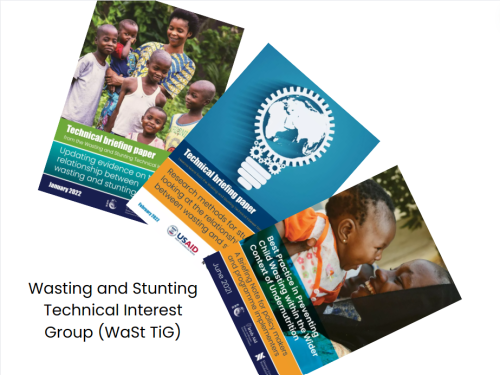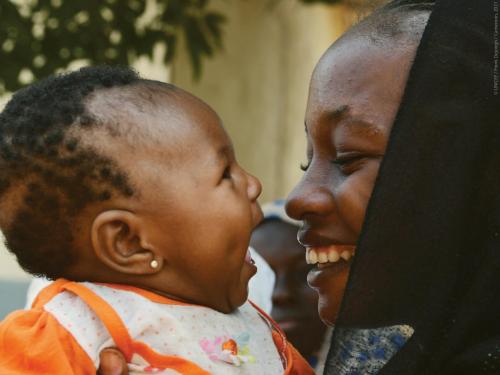How we started
Since the 1970s, those working in nutrition have categorised undernutrition in two major ways, children are either wasted or stunted.
There has very rarely been consideration for the relationship between these two types of undernutrition in children with limited evidence to describe the associations between wasting and stunting or the overlaps in how a child experiences them. Little has previously been known on:
- Whether one precedes, or predisposes, the other and what that might mean for policies and practice.
- The overlapping biochemical and physiological processes that lead to a child becoming wasted and/or stunted, and recovering from the same, and how they might be mediated and /or magnified.
- The scale of the problem of concurrent wasting and stunting in children and its implications for mortality risk and for programmes aiming at providing treatment for the most at risk.
The WaSt TIG was set up to address this gap.
Phase 5: (2023 - 2025)
In 2023, the WaSt TIG enters its 9th year of work with much evidence generated since the original impetus for the creation of the group, which was to explore the separation between wasting and stunting in programmes, policy and research and question whether this is empirically justified. To date, the group has focused on understanding the physiological, biological and epidemiological relationships between these two forms of undernutrition and has centred its work around three objectives:
- To continue to generate evidence to increase the understanding of the relationship between wasting and stunting and what this tells us about their aetiology, consequences, treatment and prevention.
- To translate the implications of the evidence for policies and programmes to better meet the needs of national and global actors.
- To further influence the research agendas of donors, academia and implementation research-focused agencies.
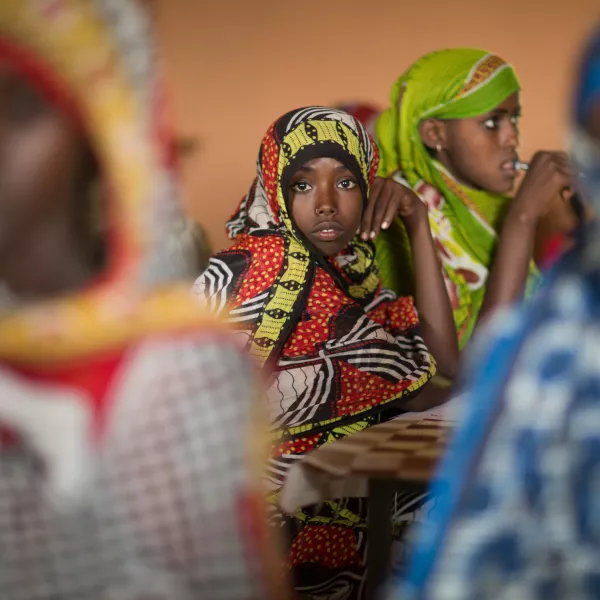
To date we have produced a number of outputs related to this second objective:
- A summary of our research on children with severe underweight and their response to treatment in Field Exchange.
- A video ‘Working to end the divide between wasting and stunting: the work of the WaSt TIG’ – which outlines the background and some key findings of the work of the WaSt TIG.
- A multi-media blog ‘Targeting treatment to the children who need it most: How evidence from the WaSt TIG on mortality risk could help optimise the design and impact of treatment services for malnourished children’ – which aims to succinctly communicate the findings of our work on mortality.
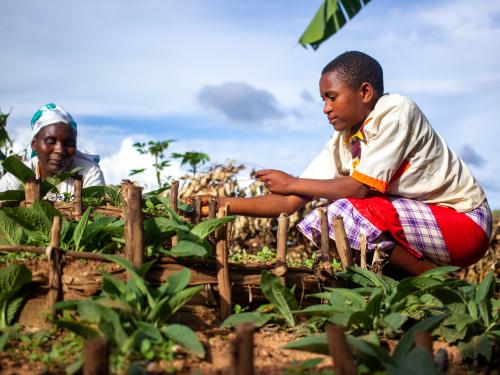
How do children with severe underweight and wasting respond to treatment?

Working to end the divide between wasting and stunting
Phase 4 (2020-2022)
In 2020, the WaSt TIG entered its fourth phase of the project, with work on key workstreams continuing. The work was arranged according to the three objectives articulated in the workplan.
- An update to the systematic review which explores the latest evidence on the relationship between wasting and stunting, the interconnected physiological processes, the burden, aetiology and timing of wasting and stunting as well as concurrent wasting and stunting.
- Work exploring the sex differences in relation to wasting and stunting. A systematic review and meta-analysis explored sex differences in undernutrition and concluded that boys are more likely to be undernourished than girls. An additional paper explores changing sex differences in undernutrition of African children specifically and a complementary narrative review explores the early life mechanisms which might underlie these sex differences. Listen to the WaSt TIG authors discuss the findings of these interesting papers here.
- An analysis of 12 cohorts in settings where wasting treatment was not widespread to further explore mortality risk associated with concurrent wasting and stunting. We have published three related studies exploring the findings:
- • A paper exploring which anthropometric criteria for best identifying children at risk of mortality which has pointed to the value of using MUAC and weight-for-age (WAZ) case definitions to identify children at the highest mortality risk ('Anthropometric criteria for best-identifying children at high risk of mortality: a pooled analysis of twelve cohorts')
- • A follow on paper exploring the prognostic value of MUAC, WAZ and WHZ for predicting deaths over periods of one, three and six months follow up ('Prognostic value of different anthropometric indices over different measurement intervals to predict mortality in 6–59-month-old children')
- • A secondary data analysis examining anthropometric deficits and associated risk of death by age and sex ('Anthropometric deficits and the associated risk of death by age and sex in children aged 6-59 month: A meta-analysis')
- Listen to the some of the reflections on this work in a presentation by Tanya Khara at the USAID Future of Food Assistance for Nutrition: Evidence Summit II in 2020.
- A secondary data analysis exploring how children with severe underweight and wasting respond to treatment which suggests that wasted children with WAZ <−3 are an especially vulnerable group and those with moderate wasting and WAZ <−3 likely require a higher intensity of nutritional support than is currently recommended.
- We also published our WaSt study protocol entitled ‘Bringing new evidence on undernutrition and mortality risk into practice: Protocol for a prospective cohort study'. This outlines a study protocol to test whether weight-for-age and mid-upper arm circumference can be effectively utilised in existing programmes to capture children with single and dual nutritional deficits and reach considerably more children at a high risk of death.
- Towards the end of Phase 4, we published a concept note for research to further explore the pathways to wasting and stunting to increase our understanding of the relationship between wasting and stunting and what this tells us about their aetiology, consequences, treatment and prevention. We will further explore opportunities to collaborate on conducting this research in the next phase of the WaSt TIGs work.
- A paper from Scientia on the work of the WaSt TIG which unpacks the story of the WaSt TIG to date and some of the key findings for a broader audience.
- A technical briefing paper related to the systematic review aims to unpack some of the key findings from the review, highlighting the programmatic and policy implications of some of the findings.
- Work on the prevention of child wasting within the wider context of undernutrition, which updates previous reports on wasting by ENN and is accompanied by three podcasts, two podcasts exploring what Malawi and Pakistan are doing to prevent wasting as well as an interview to understand UNICEF's prevention plans.
- We explored some work that practitioners are doing in bringing wasting and stunting programmes in a special section of ENN’s Field Exchange (here).
- We wrote a technical brief to capitalise on and share the extensive experience of the WaSt-TIG in scrutinising data through the lens of the relationship between wasting and stunting in the hope that it will inspire and facilitate others to do the same.
- We published a paper exploring how nutrition research can better reflect the relationship between wasting and stunting (here) which reflects some of the broader lessons from the WaSt TIG in relation to research.
Phases 3 - 1
The WaSt TIG developed the following pieces of work:
- A policy brief ‘Child wasting and stunting: Time to overcome the separation (2018)’ (also available in French, Spanish and Arabic) - a culmination of the research and discussion of the group over the last 4 years.
- A viewpoint article in the Lancet Child and Adolescent Health 'Beyond Wasted and Stunted - a paradigm shift is needed to fight child undernutrition'. (read more on a blog written by the WaSt TIG Coordinators).
- Data from the Medical Research Council (MRC) Gambia surveillance programme has been another key focus on the WaSt work with detailed analysis carried out on cohorts of 0-24 month age groups in relation to seasonality and growth, wasting as a risk factor for stunting and vice versa.
- The very first WaSt TIG podcast featuring members of the group discussing some of the analysis the group has produced over the last few years.
- The development of a concept for a research study aiming to bring this learning on the relationship between wasting and stunting and their combined impact on mortality into existing programme practices.
- The links between the WaSt Project and the MAMI Special Interest Group were explored in a face to face meeting between the two working groups. A meeting report was produced.
- We evaluated the work within the WaSt Project through a Stories of Change report.
- A sub-working group of the WaSt TIG met in December 2019 to discuss their multiple cohort mortality analysis and related work exploring wasting stunting and mortality risk. Revisiting mortality and anthropometric deficits/reconsidering 'risk'.
The WaSt TIG completed the following pieces of work:
- A re-analysis of DHS and MICS datasets from 84 countries to generate a pooled prevalence estimate of the burden of concurrent of wasting and stunting in those countries. (Open access paper published in Maternal and Child Nutrition Journal).
- These findings were also used by the Global Nutrition Report 2016 (p.23).
- An analysis of cross-sectional datasets (SMART surveys) to examine concurrence in more detail and look at how best to identify concurrently wasted and stunted children (findings have been published in Archives of Public Health).
- A related analysis focusing on identifying those children at most risk of mortality using cohort data from Niakhar, Senegal (published in Public Health Nutrition).
- An additional paper which specifically explores the patterns of concurrent wasting and stunting in children under 5yrs of age in the Niakhar Senegal cohort, highlighting the increased risk in boys (published in Maternal and Child Nutrition).
The WaSt TIG completed the following pieces of work:
- A narrative review of the relationship between wasting and stunting to the understanding of the links between the two conditions.
- A research prioritisation exercise was conducted and subsequently published.
- An analysis of five high burden country datasets to estimate the burden of concurrent wasting and stunting for the 2015 Global Nutrition Report.
Find out more about WaSt TIG
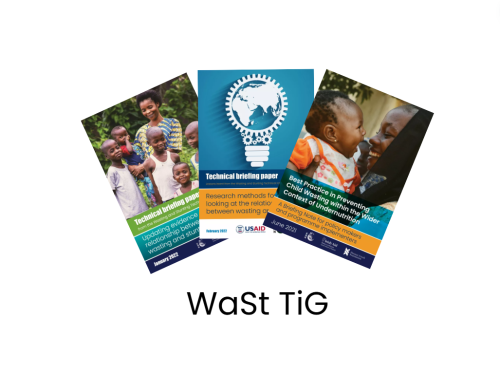
WaSt Technical Interest Group
The Wasting and Stunting (WaSt) Technical Interest Group (TIG) aims to explore the relationship between wasting and stunting to improve services and systems for malnourished children and their families.




